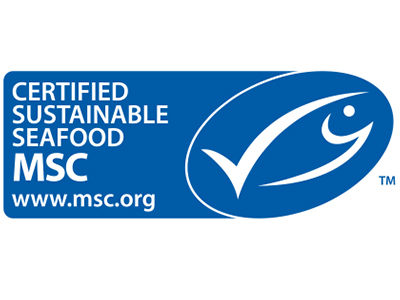
The Independent Adjudicator (IA) has determined that the world’s largest tuna purse seiner fishery, the PNA, should not be MSC certified for FADs and bigeye. This comes after a lengthy dispute process. The PNA purse seiner fishery remains MSC certified for free school skipjack and yellowfin catches.
John McKendrick, the IA, published his decision on October 12. He said the “objection is upheld in respect of PI 1.2.2 and 2.4.2.” In December 2020, the PNA announced that it wanted to get its FAD catches MSC certified. However, soon after, the certification assessment body (CAB), Lloyd’s Register, gave the go-ahead for the scope extension, the fishery faced fierce opposition from several groups including the Coalition for Transparent Tuna Fisheries (CTTF). This past July, the IA remanded the CAB’s Final Draft Report despite dismissing 13 out of 15 objections against the PNA fishery. The adjudicator highlighted that the passing scores of 60 given by Lloyd’s for HCRs pertaining to the bigeye stock (PI 1.2.2.) and habitat management strategy (PI 2.4.2) in terms of FADs could not be justified.
A month after the IA’s report, the CAB objected to this ruling insisting that the grades that it gave for HCRs and habitat strategy in terms of FADs were justifiable. It especially insisted to the adjudicator that the PNA FAD fishery is complying with WCPFC’s management measures. But the IA has ignored this on the basis that this data was shared after the final hearing was concluded and therefore is not valid.
Given the fact that all stacked MSC certifications held by private companies and industry associations covering the PNA EEZs and high seas have all obtained MSC for both their FADs and bigeye based on the largest part of PNA’s management and research data, this negative ruling came as a surprise.
DELAY IN HCR COMMITMENT
In terms of Harvest Control Rules (HCRs) (PI 1.2.2) especially pertaining to bigeye stock, the IA said in Wednesday’s ruling that the crux of the CAB’s August assertion was that WCPFC’s conservation management measure reads that “… an agreement or framework is in place that requires the management body to adopt HCRs before the stock declines below BMSY is met, given that: i) There is a binding commitment to develop and implement an HCR for bigeye tuna; ii) There is a binding commitment to maintain stocks at or above BMSY.”
McKendrick explained that he does not accept this argument because of the lack of a causative link between the two statements. He said that if the CAB is correct and PNA meets the requirement that an agreement or framework be in place that requires the management body to adopt HCRs before the stock declines below BMSY, then it is surprising that there is no clear statement to that effect. He finds “the CAB has not been able to show the management body has committed to introduce harvest control rules before big eye tuna stocks decline below BMSY. They certainly have not demonstrated a clear commitment in that regard.”
The IA also pointed out that MSC CABs themselves have been troubled by WCPFC’s delay in establishing HCRs, and their adopting a hard deadline for the harvest strategy conditions for the PNA fishery and others. “If the commitment exists, reading across the WCPFC CMMs, why then was it necessary for the CAB and other CABs to adopt a “hard deadline”? Either the commitment exists or it does not.” So he thinks the score of 60 for PI 1.2.1 has not been met.
EVIDENCE DISCOUNTED IN HABITAT STRATEGY
In terms of FAD habitat strategy, the IA said that he considered the various pieces of evidence submitted by Lloyd’s but “the six categories of evidence/documents in the CAB’s post remand decision was not properly part of the objection process and cannot be fairly and properly considered by the IA.”
He had already pointed out in his previous decision in July that he was not satisfied with the CAB’s views expressed in the Final Draft Report and that there was an inconsistency in the PNA’s compliance with the respective conservation measures.
The IA concluded on FADs that “given the CAB relies on this information to justify the score of 60, I cannot be satisfied the score of 60 is justified.”
While this whole arbitration process has been going on, several other fisheries such as Tri Marine, OPAGAC, and US Pacific Tuna Group received their MSC logos, which all included bigeye and FADs within the PNA EEZs. As recently as July, FCF collaborating with Nauru Authorities, was the 11th WCPO FAD set fishery to gain certification, which also received its bigeye catch certified as sustainable. In September, three seiner companies that already have the MSC logo for their commercial tuna catches in Micronesia and the WCPO high seas, asked for a scope extension to include free school and FAD-caught volumes from all PNA EEZs. This comprised skipjack, yellowfin, and bigeye tonnages.
Despite losing this long adjudication process over the scope extension with FADs and bigeye, the PNA purse seiner fishery remains active asn certified for free school skipjack and yellowfin catches. It is scheduled for re-certification in March 2023. This process could provide them a second chance of getting FADs and bigeye included.